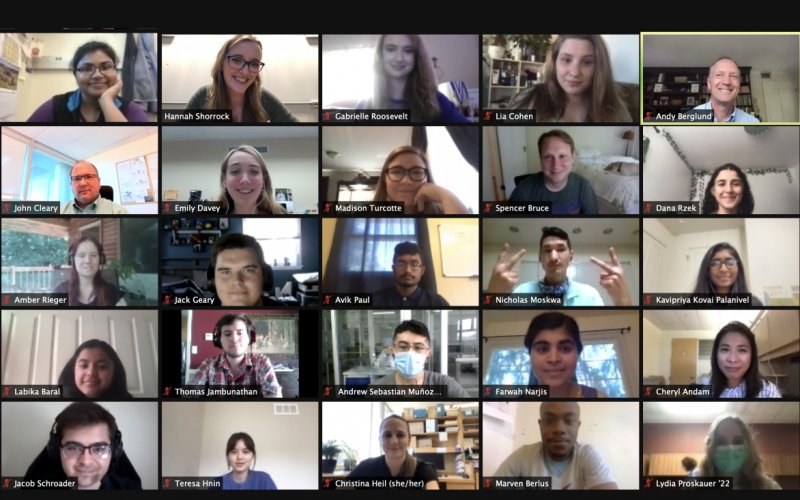Students became Trainees in Bioinformatics this Summer — Courtesy of the RNA Institute

ALBANY N.Y. (Sept. 28, 2021) — Research into how cells function and interact with each other and how pathogens exploit them in disease is generating data at ever-increasing rates of speed in the current era of genetics. When it comes to storing, processing and analyzing these data, scientists, such as those of the RNA Institute, have come to rely on the interdisciplinary field of bioinformatics.
For this reason, this summer, the Institute ran a 10-week Summer Bioinformatics Program, where 34 trainees from educational levels ranging from high school to postgraduate study analyzed biological data generated in the Institute’s laboratories by its research programs.
“This program is an essential part of the Institute’s efforts to train the next generation of RNA researchers, because having the computational skills to mine genetic data sets is going to be an important skill going forward for scientists.” said RNA Institute Director Andy Berglund.
The program was directed by Hannah Shorrock, a postdoctoral associate from the Berglund Lab who took over the program in 2021, after participating in the program in 2020. She said the program’s goal is to provide students with the necessary skills to perform independent research using sequencing data. “We try to expose the students to multiple RNA sequencing technologies, including single nucleus RNA Seq, nanopore sequencing and sequencing-based approaches to study RNA structure” she said.
Each trainee worked closely with RNA Institute faculty and analyzed data generated from their labs during the course of the program. This year’s program also included a number of research seminars and professional development workshops. At program’s end, each trainee presented their work on analyzing the dataset from their respective research group in a 12-minute talk to Institute faculty, staff and students.
“I had a wonderful experience,” said Chetna Mathur, a biology PhD candidate and a member of Tom Begley’s Lab who learned the basics of the UNIX operating system and R programming language. “We had a superb team of faculty, coordinators and participants who guided and supported us," she said. "It helped me grow my bioinformatic skills and to approach biological research data analysis” She also called the development seminars excellent preparation for careers in research.
Labika Baral, a School of Public Health undergrad, did not know what bioinformatics was at the start of the summer, but learned it, along with how biology and informatics connect to help answer a wide variety of research questions. “Overall, I had an amazing experience in the program, learning tools used to analyze RNA sequencing data and applying bioinformatics to Myotonic Dystrophy and cancer,” she said.
Students were split into small groups and each group was assigned a group leader who was experienced with data analysis to closely assist the trainees. One of the group leaders and instructors this year — also a group leader a year ago — was Emily Davey, who now works as the Berglund Lab’s bioinformatics technician. She called it “crucial for the trainees not only to produce the data but also to learn how to process and analyze the data.”
Beyond the basics of bioinformatics and the skills needed to begin genetic data processing, said Davey, “we were also particularly interested in exposing underrepresented minorities to this field, as bioinformatics is still largely homogeneous. We hope that by equipping these students with bioinformatic skills, we can make way for a new generation of diverse researchers who are skilled in the dry lab as well as the wet lab.”




